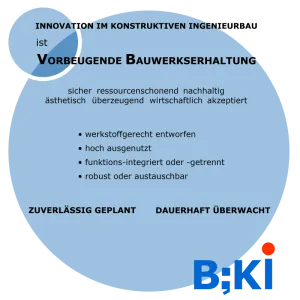Modernisation of the Servo-Hydraulic Control of the Test Cylinder
With the modernisation of the servo-hydraulic test cylinder control system procured in this ERDF project from the InfraFEI 2021 funding programme, the laboratory is able to carry out examinations of building structures, components and fasteners as part of research projects and final theses with a focus on building maintenance.
Climate protection and resource conservation provide strong impulses for our actions. A significant contribution will be our efforts to use our existing buildings as long as possible or – if necessary – to convert them and – if possible – to maintain them for a long time over their predicted lifespan or to repair them individually in a way that protects the building and resources. This is only possible if we know our existing buildings. Projects and research activities in the field of building preservation are striving to gain this knowledge.
Initial situation and necessity
There are a total of 120,000 bridges in Germany. One third of all German bridges (approx. 39,000) are part of the trunk road network and run along motorways or federal roads. They are a basic prerequisite for mobility as well as the supraregional transport of goods and form a backbone for a functioning economic system. However, the road bridge portfolio in Germany is in poor condition. In the coming years, a large number of rehabilitation and new construction measures will therefore be necessary to maintain the efficiency of the trunk road network. The funds for maintenance are constantly increasing and, according to the Federal Transport Infrastructure Plan 2030, will reach over 4 billion euros in 2020 [1]. The situation in rail transport is even more urgent.
Objective of the project
The Department of Civil Engineering focuses on the preservation of buildings. Essential to the preservation of buildings is the assessment and preservation as well as repair of engineering structures, especially bridges. The assessment of damaged bridges is increasingly carried out by digital measuring systems, which are designed to be adaptive by means of neural networks. This gives the operators of the infrastructure systems the opportunity to monitor the current condition of the structures on a web-based basis and to coordinate the repair and new construction measures. The basis for this monitoring is the wealth of experience gained from tests of the bridge support elements. In order to achieve this goal, an application was made for a test frame equipped according to the latest technical specifications in the structural engineering laboratory of the Potsdam University of Applied Sciences, with which the materials of modular bridge systems can be tested for their durability and longevity.
[1] Federal Transport Infrastructure Plan 2030, Federal Ministry of Transport and Digital Infrastructure, Berlin, August 2016



